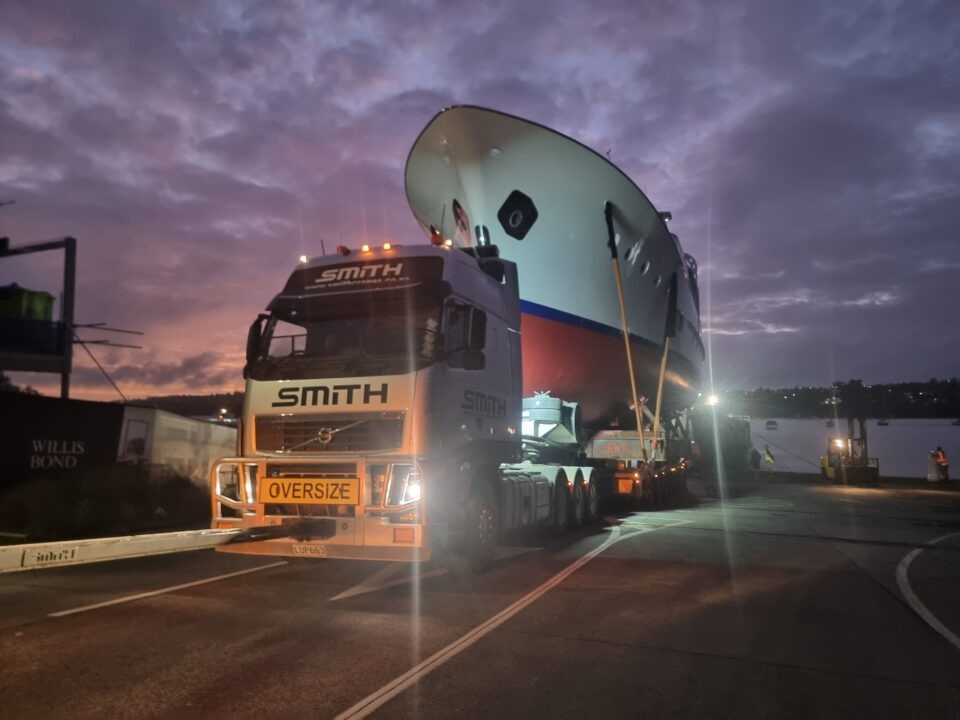The slowing nature of our economy and the change in government have bookended a more challenging 12 months for the oversize transport sector, and will set the scene for the coming year.
Jonathan Bhana-Thomson, CEO, NZ Heavy Haulage Association.
The NZ Heavy Haulage Association has seen continuing restrictions on the operation of our industry with an increasing number of roading maintenance and upgrade work competed off-peak and overnight, impinging on traditionally low traffic times when oversize loads are transported.
Add to that the move towards completing this work using a full closure with detours, and this can make it difficult to transport oversize loads to schedule, if the detours are not suitable for them.
In the coming months, we will continue to engage with the NZTA and the traffic management project teams that are implementing the new Guide to Temporary Traffic Management, to ensure that the impact of the closures and detours on road users – including oversize – are taken into account.
Another area that has seen significant impact on oversize is the ongoing roll out of safety projects that include the installation of wire rope median barriers.
The association is all for improved safety on the road, but we argue that this has to balanced with efficiency and, also, the design of the safety works needs to assess the impact on oversize. The previous Government’s aim to improve safety through physical improvements and slowing speeds has seen construction start on a number of projects this past year including in the Horowhenua and the Canterbury regions. We await with interest to see the status of these projects given the National Party’s voiced opposition to them.
Coming on stream over this course of the past year has seen a number of major longer-term capital projects, such as the new Motorway north of Puhoi, the new Expressway north of Peka Peka, and the completion of the Waikato Expressway.
All these projects provide for much safer and efficient transport of oversize loads, given the roadway width, divided roadway and wide shoulders. All these are built to height and width dimensions that provide a consistent route for our industry.
The new Government’s policy to build 13 new Roads of National Significance including the extension of the Waikato Expressway to Piarere, the Tauriko West project and second stage of the Takitimu Northern Link, as well as the Belfast to Pegasus motorway north of Christchurch, are all music to the ears of our members.
This is in terms of the efficiency and transport safety for them that will result from these projects.
Other projects that we have been engaged over include the Otaki to North of Levin project, which would complete the near 100 kilometre, four-lane motorway/expressway north of Wellington. The association has been engaging in the Notice of Requirement process on this and other projects, such as the Frankton NZUP project, and we look forward to these progressing over the coming year as they move into design.
It is crucial that these projects not only provide for our overall over-dimension width and height clearance, but also provide operational efficiency for access on and off with infrastructure such as traffic signals, roundabouts and signage.
We were pleased to release in 2023 the latest update to our Road Design Specifications for Oversize Loads, now into its ninth edition, which included designs for new design features such as speed tables and electronic roadside signage.
This document is regularly used by road designers to build in capacity and design features that mean that roads are suitable for oversize. As we move forward into the coming months we will look to have better engagement with more detailed aspects, such as the swept path for oversize transporters around roundabouts, which have proven to be a tough issue to solve in recent times.
The Association’s aim is to be the ‘sign of the professional’, which is why we are continuing to update our Good Practice Guides for our industry sectors.
The increasing amounts of roading infrastructure with signage, pedestrian refuges, signalised crossings and alike mean that there remain challenges for operators to manage their loads through these restrictions.
The same can be said for the large number of road maintenance sites. While we want our roads to be well maintained, it comes at the cost of the restrictions imposed by the traffic management to keep workers safe, and to manage speeds through sites. Good communication between NOC contractors and oversize operators hope to be improved over the coming months through technology.
Utilising innovations and ideas from within the oversize sector are key aims of ours. Our members are experts with valuable opinions, insights and solutions.
We are currently supporting a member-led idea to combine oversize-load movements and real-time road works on an app. We are also continuing to improve the signage on load pilot vehicles and engaging our members’ local knowledge in feedback with the design of roading projects in their area.
Another area we will step up our involvement is in consistency across rules with overhead line authorities, so that there is predictable rules around advance notification timelines, provision of over-height escorts, and their charging regime for services – including standdowns for staff. While each overhead authority has its own geographical area, these do not match up to our routes and roadways, so often over-size loads will travel through multiple areas.
Within our membership, alongside heavy haulage operators, we have house movers, load pilots and heavy recovery operators who each have particular issues to be addressed, and we will continue to advocate for these individual sectors with both on-road and off-road issues as they arise.
We look forward to the challenges that these will bring over coming months and future years.


Parting words from Jeremy Sole- a final column